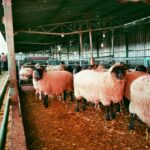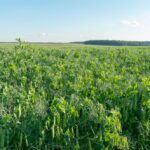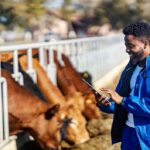As global agriculture continues to evolve, the role of technology in farming is becoming increasingly important. Remote farm monitoring, which allows farmers to track and manage their crops and livestock in real time, is revolutionizing the way agriculture is practiced worldwide. While many regions are embracing this technology, South Africa can draw valuable lessons from Canada, where remote monitoring has been successfully integrated into farming practices.
The Importance of Remote Monitoring
Remote farm monitoring involves the use of sensors, drones, and satellite technology to collect data on soil moisture, crop health, weather patterns, and livestock conditions. This data is transmitted to farmers via mobile apps or computer systems, enabling them to make informed decisions on irrigation, fertilization, and pest management. In Canada, remote monitoring has helped farmers improve crop yields, conserve water, and reduce the use of pesticides, while also improving animal health in livestock farming.
Canada’s Success in Remote Farm Monitoring
Canada’s agricultural sector has embraced technology, particularly in remote farm monitoring, to overcome challenges posed by harsh weather conditions, vast land areas, and labor shortages. Canadian farmers use a range of advanced tools, such as precision farming systems, GPS-guided tractors, and environmental sensors. These tools help farmers manage their farms more efficiently, reduce waste, and optimize productivity.
In provinces like Saskatchewan, where agriculture is a significant industry, farmers have integrated remote monitoring to track field conditions and receive alerts about potential problems, such as drought or pest outbreaks. Drones and satellite imagery also allow farmers to assess crop health from above, making it easier to spot issues that may go unnoticed from the ground.
Lessons for South African Farmers
South African farmers, who face their own set of challenges—including erratic weather patterns, water scarcity, and soil degradation—can benefit greatly from adopting remote monitoring technology. Here are some key lessons that can be applied:
- Harnessing Data for Smarter Decisions: Remote monitoring systems collect vast amounts of data that can guide farmers in making better decisions, such as when to irrigate or fertilize. By adopting similar systems, South African farmers could improve crop productivity while minimizing resource usage.
- Sustainability Through Precision Agriculture: In Canada, precision agriculture practices, enabled by remote monitoring, have reduced the use of chemicals and fertilizers, leading to more sustainable farming practices. South African farmers could reduce their environmental impact by incorporating similar precision techniques.
- Improving Water Management: Water scarcity is a critical issue for many South African farms, and remote monitoring tools can help optimize water use by providing real-time data on soil moisture levels. This would allow farmers to make more efficient use of water resources, especially in areas affected by drought.
- Livestock Monitoring and Health: Remote monitoring systems in Canada are also used to track the health and well-being of livestock. South African farmers could implement similar systems to detect early signs of illness, track animal behavior, and manage feed more efficiently.
- Affordability and Scalability: While some of Canada’s technologies may appear costly, many remote monitoring tools are becoming more affordable and scalable. South African farmers can start small with accessible tools like weather sensors or basic drone systems and expand as their operations grow.
The potential of remote monitoring for South African farmers is vast, and Canada’s experience offers invaluable insights. By adopting remote monitoring technologies, South African farmers can overcome the challenges of climate change, improve resource management, and increase farm productivity. As technology becomes more accessible, the future of farming in South Africa looks promising, with greater opportunities for sustainability and innovation.
Join 'Farmers Mag' WhatsApp Channel
Get the latest Farming news and tips delivered straight to your WhatsApp
CLICK HERE TO JOIN






